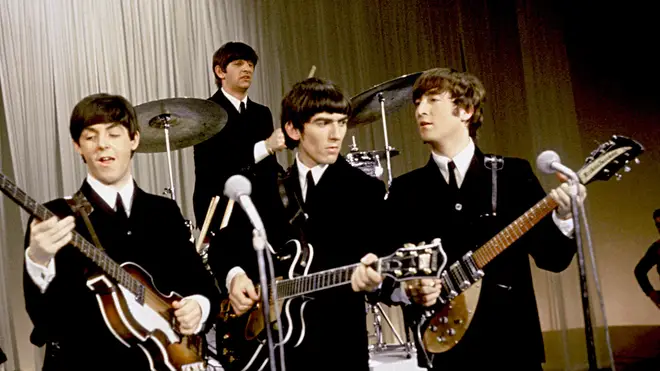On Air Now
Early Breakfast with Lucy Coward 4am - 6:30am
21 January 2020, 13:07 | Updated: 21 January 2020, 13:24

Music has evolved very quickly, right? Well… no. Scientists have found that human culture changes at the same pace as an organism evolves.
Pop music has changed a lot in the last 50 years. First, there were the Beatles and the Rolling Stones, whose rock sound in the 1960s quickly replaced the jazz and blues music of the early 20th century. Then, synths and sampling came in and the Eurythmics had a big moment.
And in the last 20 years, we’ve lived through a whole new pop revolution, with the rise of rap and hip-hop artists like Kanye West and Lizzo.
But a new study is claiming that pop music surprisingly only moves... well, at a snail’s pace.
Scientists at New Imperial College London say the pace of modern culture, including pop music, is just as steady as biological evolution.
“In contrast to the general belief that modern culture evolves very quickly, we show that rates of modern cultural evolution are comparable to those of many animal populations,” the study claims.
“Our results demonstrate the deep unity of the processes and patterns of cultural and organic evolution.”
Read more: 27 pop songs you didn’t know were inspired by classical pieces >

Scientists at New Imperial College studied records of change in various cultural items – including pop music, literature, scientific papers and cars – and compared them with rates of change in finches, moths and a species of snail.
They calculated the rates of change for both groups over time, using metrics developed by evolutionary biologists.
Read more: Why are pop songs 3 minutes long? >
“We measured those attributes in the same way – by this metric called a ‘haldane’,” author Armand Leroi at Imperial College London told MailOnline.
“It was originally developed by evolutionary biologists to compare very different populations of creatures – we, said, well why not culture then too?”

In the study, each cultural item was defined as a ‘population’. Each population can be viewed as a ‘unit of evolution’ because, researchers explain, when an artist makes a new product, they are always influenced by existing products.
Examples include film composer John Williams, who was heavily influenced by classical composers like Tchaikovsky and Wagner when writing his visionary score for Star Wars. Or perhaps Queen and their enduring ‘Bohemian Rhapsody’, whose operatic mid-section was inspired by vocals from the great soprano Maria Callas.
Scientists compared each cultural ‘unit’ with an item from the natural world, including a 50-year study of a species of moth, and a 20-year study of an English variety of snail.
The team concluded that cultural and animal items evolved at a very similar rate.
“Including artists such as the Rolling Stones, The Ronettes, Lenny Kravitz and the Pussycat Dolls, pop music has always had a place for noisy aggressive music with lots of drums and guitars as well as girl bands with smooth, rounded vocals,” the study says.
Between 1960 and 2010 there was always pop music with loud guitars, the study continues. But, scientists say, “it does not follow that rock and roll can never die”.